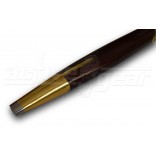Details
Both of these ranks, their squadron and battery equivalents, and staff-sergeants in other arms, wore three chevrons and a crown. In 1915 company, battery, squadron and troop sergeants-major became warrant officers class II (by Army Order 70) and thereafter wore a single large crown, without any chevrons, on each forearm. The type of crown used was the Tudor Crown also known as the King’s Crown or Imperial Crown; this crown was used not representing the British Monarch personally but also “The Crown” meaning the sovereign source of government authority. As such, it appeared on numerous official emblems in the United Kingdom, British Empire and Commonwealth. One such area was the military of these countries which used the crown in many ways such as the rank for warrant officer class II and Major. The St. Edwards Crown replaced the Tudor Crown and so the military follow with the change as well as this crown is the present version used to represent the ranks and other official emblems of the forces in the Commonwealth.
Note the designation of Warrant officer classes was in Roman rather than Arabic numerals until the latter half of the 20th century. From 1938, there was also a rank of warrant officer class III (WOIII). The only appointments held by this rank were platoon sergeant major, troop sergeant major and section sergeant major. The WOIII wore a crown on his lower sleeve (which is why all WOIIs switched to a crown in a wreath during this period from 1938 to 1947). The rank was placed in suspension in 1940 and no new appointments were made, but it was never officially abolished.
Here in the Caribbean, our rank insignias are adopted from the British Army rank system. Active Gear Limited sells embroidered or worsted crown which is worn with a cloth wrist band with field uniforms.
Additional Information
| size | N/A |
|---|
You may also be interested in the following product(s)
-

Pace Stick
$189.99




